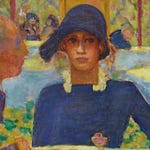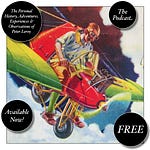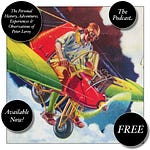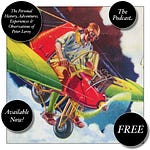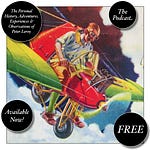35
RASKOL AND MARVIN AND I put to use the lessons we had learned from our earlier failure. When we were finished building Watchtower II, we had a solid base from which a dozen long uprights rose, tapering inward to support a smaller platform at the top. We made a ladder by nailing crosspieces to two of the uprights, and when, after climbing the ladder to the top, we found that the structure exhibited familiar tendencies toward collapse, we broke down and sought Guppa’s advice. He taught us the technique of triangular bracing.
While we were building and bracing the tower, we developed the game. I had never imagined that any game would be played in the lighthouse that I had originally designed. I just expected to sit up there and keep the light turning, letting my mind wander, and alerting any ships that might otherwise have blundered the five miles inland to my neighborhood, but it wasn’t a lighthouse any longer. Now it was a watchtower, and a watchtower was something else. As Raskol pointed out, it seemed to demand a watchman and some kind of action, along the lines of a prison break, with a guard in the watchtower who picked off prisoners as they tried to make a dash from the base of the tower into the concealing darkness of my back yard. We tried some thought experiments, playing this escape game in our minds, and it just didn’t work. If the prisoners tried to escape one at a time, the guard was sure to get them all, and if they made a mass break, too many succeeded. There were either too many losers or too many winners. I don’t know who suggested that the situation be reversed, but as soon as we thought of it we saw that it was the logical way to play. People would try to break into the tower.
In the game that we came to call Night Watchman, there was a single watchman, who climbed the crude ladder to the upper platform, where he sat beside the rotating light, the camp light that had been part of the loot Guppa and Mrs. Jones had won, mounted on the windup record player. The watchman was armed with a long, multicell flashlight, the beam of which was supposed to be deadly. There could be any number of other players. They became what we called night crawlers, or just crawlers. The watchman’s object was to keep the crawlers out of the tower. We didn’t supply any reason for the crawlers’ wanting to get into the tower or for the watchman’s wanting to keep them out. Their having conflicting goals was just part of the nature of the game, part of the nature of things: crawlers want to get into the tower; the watchman wants to keep them out. That’s the way it is. To start the game, the watchman closed his eyes and counted to a hundred while the crawlers scattered into the back yard. Then the watchman wound the record player and released the brake. The revolving searchlight swept the yard, and the watchman watched for the approaching crawlers while, inch by inch, they made their way through the weeds, over open patches of lawn, around shrubs, and through paths cut in the bamboo toward the base of the tower. A crawler who made it into the tower was a winner, and a crawler who was caught in the searchlight beam or the beam of the watchman’s flashlight was a loser. The game wasn’t over for the losers, though. They—and, for reasons I don’t recall, the winners as well—joined the watchman on the upper platform and helped him spot crawlers. We played each night’s game until it was over, until all the crawlers had gotten into the tower or been caught in the attempt. In practice, the end often came sooner, when our parents demanded that we come in for the night, but in theory there was no time limit. The game wasn’t over until the last crawler had been caught or made it into the tower.
[to be continued]
Have you missed an episode or two or several?
You can begin reading at the beginning or you can catch up by visiting the archive or consulting the index to the Topical Guide. The Substack serialization of Little Follies begins here; Herb ’n’ Lorna begins here; Reservations Recommended begins here; Where Do You Stop? begins here.
You can listen to the episodes on the Personal History podcast. Begin at the beginning or scroll through the episodes to find what you’ve missed. The Substack podcast reading of Little Follies begins here; Herb ’n’ Lorna begins here; Reservations Recommended begins here; Where Do You Stop? begins here.
You can listen to “My Mother Takes a Tumble” and “Do Clams Bite?” complete and uninterrupted as audiobooks through YouTube.
You can ensure that you never miss a future issue by getting a free subscription. (You can help support the work by choosing a paid subscription instead.)
At Apple Books you can download free eBooks of Little Follies, Herb ’n’ Lorna, and Reservations Recommended.
You’ll find overviews of the entire work in An Introduction to The Personal History, Adventures, Experiences & Observations of Peter Leroy (a pdf document), The Origin Story (here on substack), Between the Lines (a video, here on Substack), and at Encyclopedia.com.





